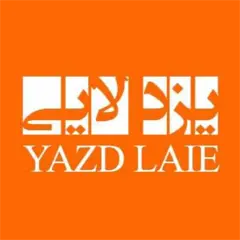
Introduction
For the consistency of the fabric, increase the strength and thickness of all types of fabric; you can use all kinds of layers. Meanwhile, woven or non-woven fabrics introduced in the market with polyethylene or polyamide adhesives as an adhesive layer can be easily attached to the fabric even with an ordinary iron and increase the consistency of your fabric.
Paper adhesive layer (adhesive layer with non-woven fabric):
This collection has about 20 models of paper adhesive layers in two colors, white and black, with polyethylene and polyamide adhesives, which are widely used in clothing, cashmere, and other textile industries.
In this case, the width of the arch can be increased up to 160 mm according to the order.
Click: Bags
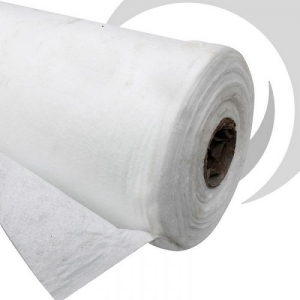
Fabric adhesive layer:
In the Yazd collection, first-class fabric glue layers are available in 103, 110, and 120 cm widths.
This type of adhesive layer is widely used in the cashmere and clothing industry.
Click: Disposable Towel

Silk lining:
Layers are divided into two groups: adhesive and non-adhesive. Most of the layers available in the market are adhesive, but they can only be used for every type of adhesive layer sewn to the fabric. These layers are used for very thin fabrics with low tissue density, fabrics that do not tolerate heat, and expensive fabrics such as natural silk.
Uses of thin silk layer:
mostly for delicate embroidery of women’s clothes,
formal men’s blouse,
Manteau,
pocket,
vest.
In addition to white and black, this type of lining has various colors that can be chosen according to the fabric’s color. It should be noted that when buying, keep in mind the width of the fabric you want because the width of the color types of this type of layer is 120 cm. However, the white and black silk layers have widths of 120 cm and 150 cm.
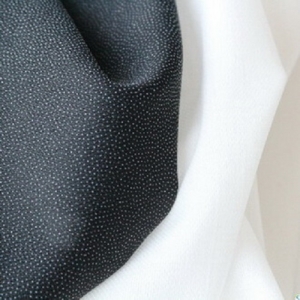
Persian Lining:
This layer has a good reputation in the market and among thoracic and clothing manufacturers. The Persian layer must be removed before using water, which purifies the layer after alluvion. The Persian layer’s color scheme is mostly white and black, but other colors have recently come to the market.
Uses:
– The best choice for the production of coats and coats

French Lining:
There are two French Lai types, known as soft and soft. French paper lining is more famous in the textile and fabric market.
Uses:
A) Its stronger type is Ahardar for:
collar,
button place
sleeve head, etc.
b) French soft layer type for:
Clothes that require less static.
Click: Promotional Handbag
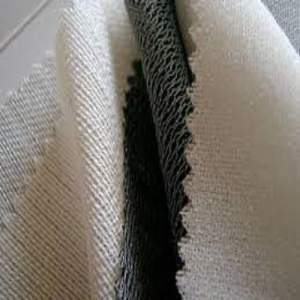
What is an adhesive layer? Types of adhesive layer
Among the various types of accessories used in clothing as an integral part, adhesive layers are among the most practical. In addition to having special functional features, they also increase the beauty of clothes. You probably know them as sewing stabilizers. Anyway, let’s start with the basics.
What is an adhesive layer?
To the pieces of the same fabric that are used for a part or a part of the clothes and between two parts of the main fabric and to:
- attractiveness
- Strength and
- Durability
The outer shape of the garment helps the adhesive layer. It is generally used in clothes such as ties, belts, and the front of the coat. These types of fabrics can be thin, thick, or changeable. Its texture is from the materials used in its construction, for example, cotton fibers, nylon, polyester, wool, or a combination of these. Adhesive layers are prepared differently, including knitting, sewing, or felting (non-woven fabric). Special processes are used in their production to give these fabrics unique features.
Different parts of clothing that are usually heated include:
Skirt and pants: waist, top and bottom
Women’s blouses, shirts, and dresses: collar, top, cuffs
Coats and jackets: front and top, collar, pocket top, pocket opening, etc.
Depending on the properties of the upper fabric, only one type of material will be used in the blouse and different parts of the dress. Regarding skirts and pants, two types of materials are usually used. A softer adhesive layer is needed for the hook and a stronger one for the waist.
Depending on the size and the amount of fabric used in the working parts, at least three layers of glue may be used in the coat. For example, the top of women’s jackets has a layer of reinforced adhesives. Suppose these finer fabrics are used for collars, front arms, and pocket openings. The most delicate type is used for the back, back of the arm, sleeve, and bottom of the coat. In any case, the majority of these types of fabrics are done on smaller parts such as sleeves, collars, waist, belts, hem, and skirt slit.
Click: Spunbond
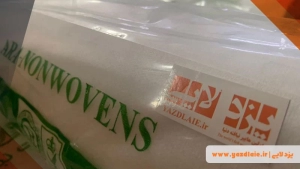
Why should we use this type of fabric?
The following are the basic uses of adhesive layers in clothing.
First of all, these fabrics are used to increase the strength and durability and maintain the shape of the clothes.
When the adhesive layer sticks to the outer part of the garment, it acts like a composite. Therefore, it protects the outer layer of the fabric by resisting external pressure.
Increases the softness and softness of the fabric.
Maintains fabric condition during work and after finishing.
It increases the life of the part of the fabric in which the glue is used.
Embroidered layer vs. embroidered lining Adhesive layer vs. embroidered lining
These terms refer to the small details of making a garment that are not normally seen when wearing it. But they play an important role in the elegance and comfort of your clothes.
Embroidery layer: It is a piece of auxiliary fabric used in parts where the resistance is greater than the weight of the main fabric. For example, the embroidery layer is seen in the waist, collar, sleeves, end of the work, and, in some cases, hem. Therefore, it strengthens the fabric. In custom hand-embroidered clothing, embroidery layers can be seen in all parts of the garment, and more than one type is used inside a garment.
Embroidered Lining: This lining is used to help smooth the inner lining and allow the garment to slide smoothly over other clothes. Lining fabrics are usually slippery and silky. However, different types may be used to increase the effect. Linings are sewn separately and then sewn by hand or machine.
Upholstery is added to create more warmth for clothes such as coats in winter. These may have a more voluminous texture but less weight and are usually made of wool or fluff. Upholstery can also be prepared separately from the main dress and can be separated or used as a base.
Underlining is a fabric that darkens the main fabric or covers more body parts. A different layer is attached to a part of the dress’s fabric. It is placed on the opposite side of the dress and then paid together with the dress. Pattern designs are done on it to reduce the shine of the fabric.
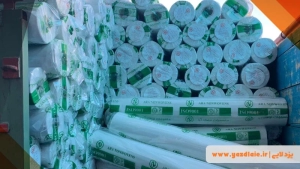
Types of adhesive layer
Their types can be divided into the following categories.
Based on the type of application
A layer of sewn and non-thermal adhesives
A layer of thermal adhesives
Based on the type of textile
Woven (woven): This mostly has light textures and is prepared depending on the type of consumption of the applicant. It can include belts, jackets, outdoor clothes, and slitted skirts.
Knitwear: Thermal knitwear fabrics are mainly used in knitwear. Depending on the desired result’s need, different thermal adhesive layers are used, which are sometimes used in places under tension and entanglement. These small things create a different product.
These types of knitted and thermally woven fabrics have elastic properties.
Non-woven: A high-quality non-woven adhesive layer made using all-polyamide materials has an ultra-uniform texture and high entanglement. Depending on the type of application, it is resistant to the penetration of materials or heat, and in most cases, it is available in very light packages of 100 to 100 grams.
Click: Melt-Blown

All about adhesive lamination
Sewing and adhesive layers are used to produce clothes and other items. The sewing layer is created by combining different layers and textures of fabric, and finally, its quality is improved by adding starch-like materials to it. This type of layer is often sewn to the fabric of the garment during sewing.
The sewing layer may have different characteristics.
The quality standard of the sewing layer depends on how it is interwoven with the main fabric of the garment.
It takes almost a long time to produce the stitch layer and then join it to the basic fabric textures. The use of sewing overlay is exceptionally limited these days due to its lower quality, cost, and time. A sewing layer is used only when an adhesive layer (melting layers) is not very suitable. Other types of lining, except sewing lining, often cannot be used in fireproof fabrics.
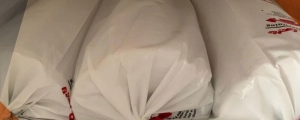
Click: Thermofuse
The uses of the sewing layer are given below:
The sewing layer is used as a connecting material in fire-resistant clothes and equipment, especially firefighters’s clothes.
Also, the sewing layer is used to produce protective parts of clothes for people who are busy growing plants.
In addition, the stitched connection line is also used in embroidery machines and devices.
Advantages of seam stitching
Suitable for producing fire-resistant clothes
Simple and beginner production method
No need for complex devices
It can be used in steel industries and very hot environments
Disadvantages of stitching
Its quality is only acceptable if it is compatible with the melting temperature.
It does not make sense to use it for mass production.
It is not easily accessible, and the market should be adjusted for easier access.
It takes a lot of time to produce it.
Its production cost is high.
Sealing Adhesives
Glue coating was used for the first time 100 years ago to produce coats, coats and hats.
These types of layers were mostly 100% cotton fabrics reinforced with starch and were not fusible. Likewise, the terrible hard touch and dispersive properties when washing would improve fusible links.
Conventional cotton fabrics are fixed together with a layer of cement using heat or weight on the fabric. This composite part frames the fabric and gives it a better look.
Nowadays, there are many types of melting devices available for mass production of adhesive layer.
Bonded liners are 100% cotton-based and have variable yarn densities for specific applications. Currently, poly-cotton blends are similarly accessible to overcome shrinkage problems in cotton fabrics, along with a range of twist blends such as rayon, poly-weave wool, etc.
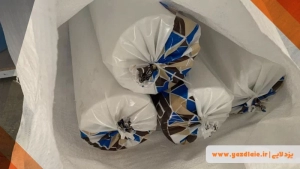
Advantages of adhesive layer
Glue coating was used for the first time 100 years ago to produce coats, coats, and hats.
These linings were mostly 100% cotton fabrics reinforced with starch and were not fusible. Likewise, the terrible hard touch and dispersive properties when washing would improve fusible links.
Conventional cotton fabrics are fixed together with a layer of cement using heat or weight on the fabric. This composite part frames the fabric and gives it a better look.
Nowadays, many types of melting devices are available for mass production of adhesive layers.
Bonded liners are 100% cotton-based and have variable yarn densities for specific applications. Currently, poly-cotton blends are similarly accessible to overcome shrinkage problems in cotton fabrics, along with a range of warp blends such as rayon, poly-weave, and wool.
The main advantage of the adhesive layer is its quality and strength, and it is used to produce anything that needs a lot of resistance (such as belts, etc.).
This can be a drawback if you need more finesse.
It can be used for fabrics such as crepe, herringbone, coil, etc. (depending on their application).
Polytextured yarns are used for bulky works. These threads are also used for injected and delicate composite fabrics. At the same time, the melt layers’ strength, compatibility, and lightness are modified by changing and modifying the natural coating or surface of the shell fabric.
An adhesive layer is expensive and needs to make sense for cheap, comfortable clothes. So, knit fabrics that combine yarns made with rayon and wool for body and volume are used for various applications.
Everything you need to know about glue coating
If you are a tailor or if you are familiar with sewing clothes, you know that in order to strengthen different parts of the fabric or some clothes, they use different types of adhesive layers. Usually, these layers are attached to the back of the fabric with the help of an iron.
It is interesting to know that there is also a non-adhesive layer. These layers must be sewn to the fabric and placed on the fabric. This non-adhesive layer is usually thin, has low density, and will not tolerate heat.
Different parts of the clothes use layers more than others. Jadkameh, the front hem of a coat or coat, sleeves, the bottom of some pants, and the collar of all kinds of clothes are among the parts that need to be sewn with glue.
All kinds of adhesive layered fabrics
Needle or wax layer
This model of the adhesive layer should be sewn to the fabric. It is made of silk and is mostly used in men’s coats and jackets.
Organza fabric lining
This layered model is the same organza fabric used in low-density and delicate clothes.
Lai Zanfix
It is interesting to know that the Zanfix layer is known by another name (double layer), and it sticks to the fabric from both sides and is mostly used in skirts, shirts, and sleeve edges.
fabric layer
The material of this type will be a layer of fabric, and they are mostly used for delicate and thin fabrics. An important thing to know about this adhesive layer is to soak it in water before using it because it may leak a little.
Paper glue layer
This type of coating is mostly used in fabrics or clothes with medium thickness.
Please read: Applications of Melt-Blown
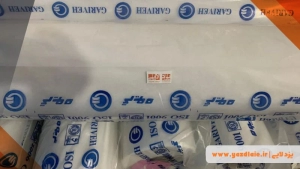
Important points to know when using
If you want to use lining in all parts of your clothes or fabric to make it more stable, it is recommended to layer the entire fabric first and then cut the fabric. Do not pull the iron on that part of the layer when sticking the adhesive layer to the fabric or clothes. It is enough to put the iron in that part of the layer and remove it quickly.
If the case’s layer, fabric, or layer is damaged during gluing, heat that layer with an iron, remove the desired layer, and stick it again.
You can contact us to buy quality adhesive layers at affordable prices.

Application of adhesive layer
One of the most important accessories needed in sewing is the glue layer. This fabric has many uses in sewing, which is why many great tailors order to buy these materials along with other accessories they need.
The first important use of these materials is in fabrics with low density, and using these layers increases the durability of fabrics. The use of layers makes the sleeve head and collar seam rise, and your clothes become more shapely, naturally attracting the attention of many people and ultimately attracting an interesting sale. Layers deal with excessive wrinkling of clothes, especially in cotton fabrics.
Not all people want clothes the same size, and some have to use special fabrics that are either too thick or too thin due to the problem of being underweight or overweight. If you use adhesive layers, you can solve this problem with special clothes for thin and fat people. Suppose you are active in the sewing and embroidery of valuable fabrics such as silk, and you are interested in less damage to these fabrics during sewing and embroidery or wearing. In that case, layers can be very useful for you.
Due to their properties, these materials prevent the seams of tight clothes from opening. Also, note that using different types of layers will reduce the stretch of fabrics and keep them attractive.
Click: Greve and Ara adhesive layer?
Getting to know the types of glue layers: Taiwan adhesive layer.
It is interesting for you to learn about different types of glue layers. There are various types of these products, and as an example, we would like to give you some tips about one of them called Lai Taiwan. I hope it will be useful.
Taiwan silk has many uses in sewing, especially in our country, and considering that it is produced in a country like Taiwan, it has relatively good quality. The material of these adhesive layers is very similar to the silk layer.
Of course, the most important difference between these two types of layers is that the thickness of the product produced in Taiwan is higher. The Taiwan layer is not used in all fabric and is stuck only in special places.
One space where the Taiwanese layer can be attached to show its effectiveness is under the embroidery. On the other hand, considering that these products produced in Taiwan have a high thickness, it is very suitable to use them for the waist of pants and sleeves. These layers are usually used for formal dresses and add to the beauty and splendor of those dresses.
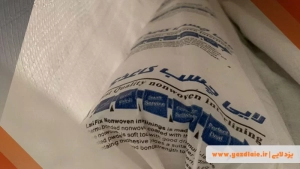
The best way to use this type of fabric
Maybe with the contents that we have told you so far, this idea has been created in your mind that the use of layers does not require special information, but in fact, you should know important points when using and benefiting from an adhesive layer in your work. You should note that you cannot use any lining for every type of fabric, but you should do the necessary checks based on the type of fabric and its model and find the right lining for it.
Be careful: if you make a wrong choice in this field, you will seriously damage the quality of your clothes. Remember that the layer should not be thicker than your fabric. You should pay attention when buying that the lining and fabric have the same level of thickness.
Be sure to put these products in water before using them in your sewing. Usually, these sewing tools have sediment, which is why we say to put them in water. Another point that you should pay attention to when using these materials is that if you plan to sew clothes, you must first cover the entire cut fabric with a layer of glue, then place the pattern on it, and start your work.
To cut, first lay the fabric flat on the table with the back facing you without any wrinkles. After doing this, place the lining completely on the fabric so that the sticky part is placed on the fabric. At this time, you should have the layer facing the iron; to ease your mind, it is better to put a damp cloth on it.
In addition, you should pay attention to another important point when ironing. Avoid pulling the iron on the clothes too much while ironing because this may change the fabric’s shape due to the lining’s material or the clothes and waste all your hard work. We tried to provide you with the most important points in this field, and we hope it will be useful.

